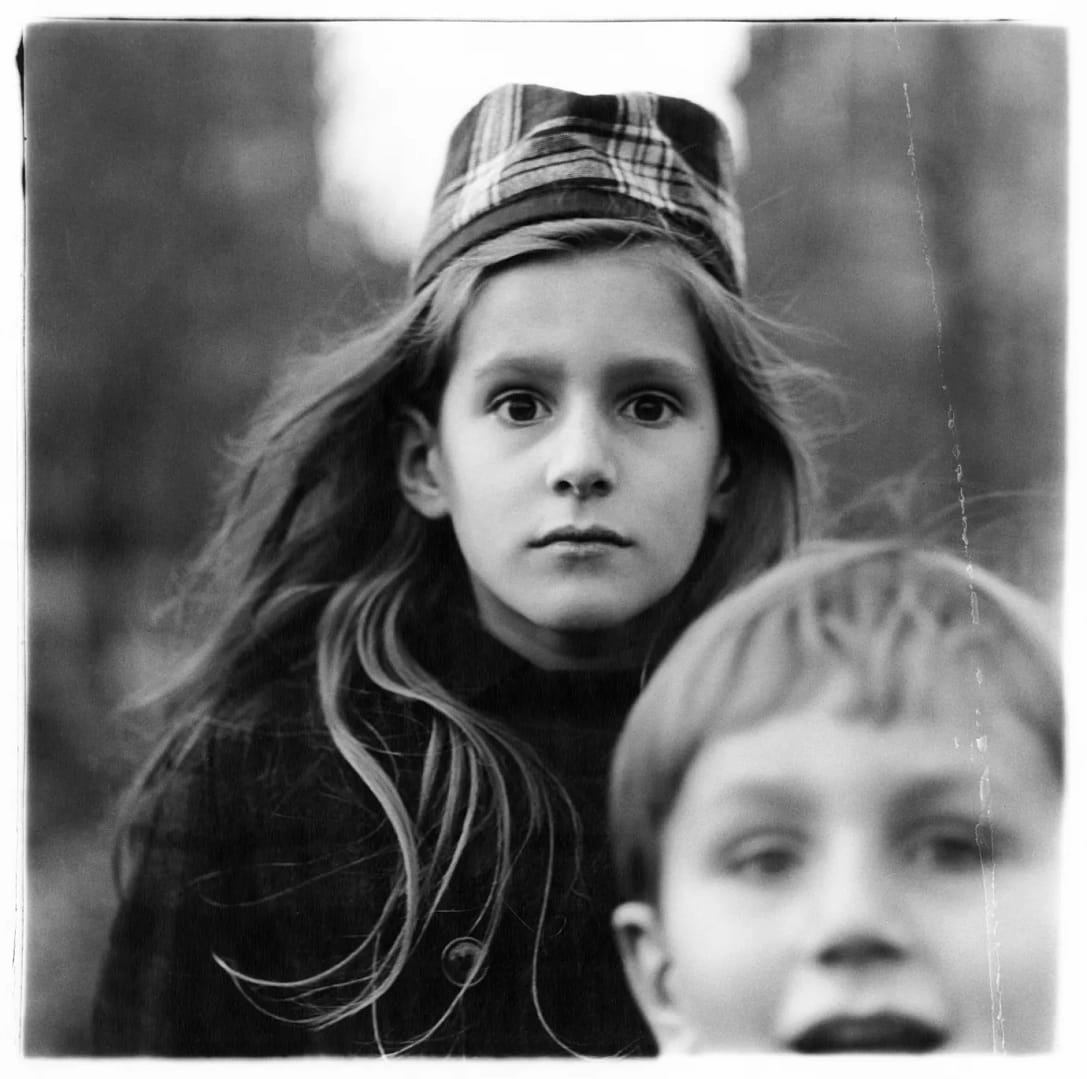
Diane Arbus didn’t photograph beauty – she photographed truth. And it wasn’t the clean kind. It was strange, uneasy, bare. Her camera didn’t flinch, and neither did she. Twins staring dead into the lens. A man in curlers. A child with a toy grenade, gripped tight like a threat. Arbus turned the ordinary surreal and the surreal ordinary. She looked into the margins and made them feel like centre stage.
Born in New York City in 1923, Diane came from privilege. Her family owned a department store. But the world she sought wasn’t behind glass. It was on the street, in tenement buildings, sideshows, dressing rooms, hotel rooms, and lives left out of the frame by mainstream America. She photographed people society either mocked or ignored, nudists, circus performers, trans women, people with disabilities, couples behind closed doors.



To many, her work was uncomfortable. Too intimate. Too raw. But that was the point. Arbus said, “A photograph is a secret about a secret. The more it tells you, the less you know.” She captured people just as they were and often, how they wished to be seen. With a kind of compassion that didn’t sanitize or distort. Just held them still. Let them be.
She wasn’t interested in pity. She wasn’t interested in shock. She was interested in the distance between how we present ourselves and who we really are. That tension—of posing, revealing, performing, hiding, sits in every frame she made.
Her style? Square-format black and white. Shot with a Rolleiflex. Centered. Deadpan. Intimate without sentimentality. She’d talk with her subjects. She’d sit with them. Sometimes for hours. Then – click. Always intentional. Always human.
Arbus’s work helped redefine photography in the 20th century. She didn’t just expand what was acceptable to shoot, she expanded who was seen. Her images ran in Harper’s Bazaar, Esquire, and later, MoMA. But her fame never sat comfortably with her. She struggled with depression. In 1971, at just 48, she took her own life. Her work, though, never left the conversation.
She made the world weirder. And in doing so, made it more honest.
Why GAWP:ONE?
Because Arbus didn’t follow trends. She followed her eye.
She gave dignity to lives others looked away from.
She taught us that the freak, the outcast, the odd – the ones we don’t expect to be iconic, already are.
To wear her name is to embrace the unpolished, the unfiltered, the flawed, the real.
She’s not here to be liked.
She’s here to be seen.
Still don’t know your Arbus from your elbow? Why not visit the great Fraenkel Gallery website

